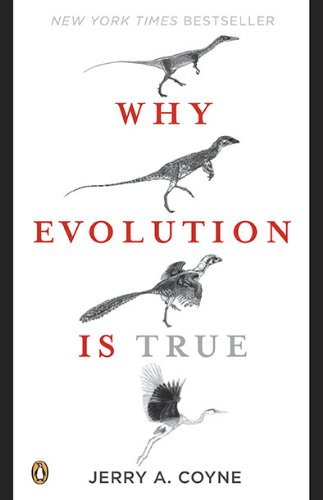Evolution of Lactose Tolerance
One case involves our ability to digest lactose, a sugar found in milk. An enzyme called lactase breaks down this sugar into the more easily absorbed sugars glucose and galactose. We are born with the ability to digest milk, of course, for that’s always been the main food of infants. But after we’re weaned, we gradually stop producing lactase. Eventually, many of us entirely lose our ability to digest lactose, becoming “lactose intolerant” and prone to diarrhea, bloating, and cramps after eating dairy products. The disappearance of lactase after weaning is probably the result of natural selection: our ancient ancestors had no source of milk after weaning, so why produce a costly enzyme when it’s not needed?
But in some human populations, individuals continue to produce lactase throughout adulthood, giving them a rich source of nutrition unavailable to others. It turns out that lactase persistence is found mainly in populations that were, or still are, “pastoralists”—that is, populations who raise cows. These include some European and Middle Eastern populations, as well as Africans such as Masai and Tutsi. Genetic analysis show that the persistence of lactase in these populations depends on a simple change in the DNA that regulates the enzyme, keeping it turned on beyond infancy. There are two alleles of the gene—the “tolerant” (on) and “intolerant” (off ) form—and they differ in only a single letter of their DNA code. The frequency of the tolerant allele correlates well with whether populations use cows: it’s high (50 to 90 percent) in pastoralist populations of Europe, the Middle East, and Africa, and very low (1 to 20 percent) in Asian and African populations that depend on agriculture rather than milk.
Archaeological evidence shows that humans began domesticating cows between 7,000 and 9,000 years ago in Sudan, and the practice spread into sub-Saharan Africa and Europe a few thousand years later. The nice part of this story is that we can, from DNA sequencing, determine when the “tolerant” allele arose by mutation. That time, between 3,000 and 8,000 years ago, fits remarkably well with the rise of pastoralism. What’s even nicer is that DNA extracted from 7,000-year-old European skeletons showed that they were lactose-intolerant, as we expect if they weren’t yet pastoral.
The evolution of lactose tolerance is another splendid example of gene-culture coevolution. A purely cultural change (the raising of cows, perhaps for meat) produced a new evolutionary opportunity: the ability to use those cows for milk. Given the sudden availability of a rich new source of food, ancestors possessing the tolerance gene must have had a substantial reproductive advantage over those carrying the intolerant gene. In fact, we can calculate this advantage by observing how fast the tolerance gene increased to the frequencies seen in modern populations. It turns out that tolerant individuals must have produced, on average, 4 to 10 percent more offspring than those who were intolerant. That is pretty strong selection.
Notes:
Some groups of humans evolved the ability to digest milk beyond infancy as their societies domesticated cows.
Folksonomies: evolution adaptations lactose
Taxonomies:
/health and fitness/disease (0.519233)
/business and industrial/agriculture and forestry/livestock (0.449522)
/food and drink/food allergies (0.426449)
Keywords:
populations (0.922090 (negative:-0.240991)), lactase (0.867009 (negative:-0.399260)), societies domesticated cows (0.837515 (neutral:0.000000)), lactose tolerance (0.834582 (negative:-0.310279)), Middle Eastern populations (0.824592 (neutral:0.000000)), lactase persistence (0.708077 (negative:-0.518591)), 7,000-year-old European skeletons (0.687624 (neutral:0.000000)), milk (0.676020 (neutral:0.000000)), human populations (0.669205 (neutral:0.000000)), tolerance gene (0.666967 (negative:-0.255631)), purely cultural change (0.661569 (positive:0.455432)), substantial reproductive advantage (0.652367 (positive:0.588519)), new evolutionary opportunity (0.651874 (positive:0.339782)), African populations (0.633693 (neutral:0.000000)), modern populations (0.623848 (negative:-0.255631)), tolerant allele (0.597167 (positive:0.578538)), costly enzyme (0.563688 (negative:-0.635888)), sugars glucose (0.560368 (neutral:0.000000)), ability (0.552913 (negative:-0.249159)), tolerant individuals (0.546545 (neutral:0.000000)), main food (0.537899 (neutral:0.000000)), Genetic analysis (0.531819 (negative:-0.316283)), DNA code (0.528423 (negative:-0.249858)), percent more offspring (0.526978 (negative:-0.611596)), gene-culture coevolution (0.522997 (neutral:0.000000)), single letter (0.522461 (negative:-0.365482)), natural selection (0.521046 (positive:0.537124)), ancient ancestors (0.518882 (neutral:0.000000)), simple change (0.513779 (neutral:0.000000)), sub-Saharan Africa (0.512487 (negative:-0.288398))
Entities:
Africa:Continent (0.889600 (negative:-0.365482)), Europe:Continent (0.566481 (negative:-0.250853)), diarrhea:HealthCondition (0.469070 (negative:-0.774121)), Middle East:Region (0.468639 (neutral:0.000000)), Sudan:Country (0.459746 (neutral:0.000000)), sub-Saharan Africa:Country (0.450159 (negative:-0.288398)), pastoralism:City (0.433040 (positive:0.677951)), pastoralist:City (0.422652 (neutral:0.000000)), bloating:HealthCondition (0.412986 (negative:-0.750936)), thousand years:Quantity (0.412986 (neutral:0.000000)), 8,000 years:Quantity (0.412986 (neutral:0.000000)), 9,000 years:Quantity (0.412986 (neutral:0.000000)), 10 percent:Quantity (0.412986 (neutral:0.000000)), 20 percent:Quantity (0.412986 (neutral:0.000000)), 7,000-year:Quantity (0.412986 (neutral:0.000000)), 90 percent:Quantity (0.412986 (neutral:0.000000))
Concepts:
Milk (0.967194): dbpedia | freebase | opencyc
Lactose intolerance (0.916331): dbpedia | freebase
Lactase (0.674117): dbpedia | freebase | yago
Weaning (0.600399): dbpedia | freebase
Evolution (0.469620): dbpedia | freebase | opencyc
Lactose (0.436962): dbpedia | freebase
Milk allergy (0.409907): dbpedia | freebase
Calcium (0.397108): dbpedia | freebase | opencyc





